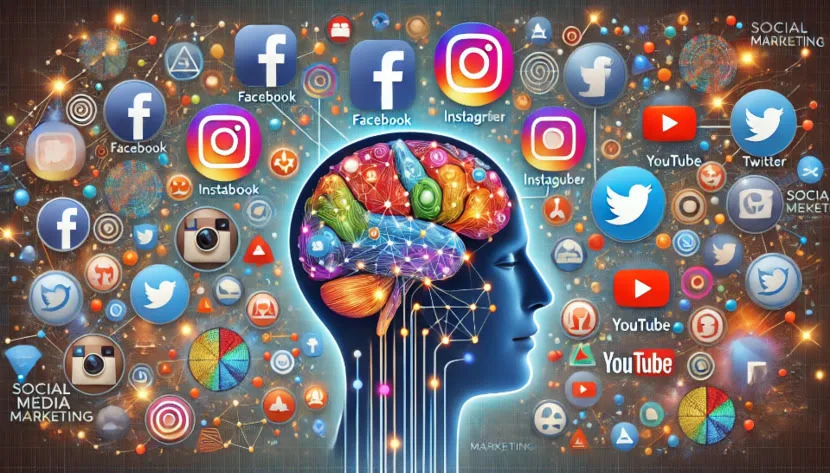
SMM Psychology: How to Understand Your Audience
In social media marketing (SMM), understanding your audience is key to creating effective strategies that drive engagement and results. Audience psychology plays a significant role in how individuals respond to content, interact with brands, and make purchasing decisions. To maximize the effectiveness of SMM efforts, it’s essential to delve into audience behavior and tailor your strategies accordingly.
Definition and Segmentation of the Target Audience
To effectively connect with your audience, it’s crucial to define and segment them based on specific characteristics such as demographics, interests, behaviors, and motivations. For instance, BingBong online casino targets a specific group of players interested in online slots, requiring a tailored approach that appeals to their gaming preferences.
Audience segmentation helps break down a broad audience into smaller, more manageable groups that share common traits. Common segments include age, gender, location, interests, and online behavior patterns. Understanding these segments allows brands to craft personalized messages that resonate deeply with each group. For example, younger audiences might respond better to playful and trendy content, while older audiences may appreciate clear, informative, and value-driven messages.
Psychological Triggers in SMM
Psychological triggers are cues that evoke specific emotions or behaviors from your audience. When used effectively in SMM, these triggers can boost engagement, loyalty, and conversions. Here are a few common psychological triggers:
- Scarcity: Limited-time offers or exclusive content create a sense of urgency, prompting immediate action.
- Social Proof: Testimonials, reviews, and influencer endorsements build trust and credibility.
- FOMO (Fear of Missing Out): Content that suggests users might miss an opportunity can drive engagement. Phrases like “Don’t miss out on our exclusive offers” can compel users to act quickly.
- Reward: Offering incentives such as discounts, freebies, or rewards for engagement creates positive reinforcement.
- Curiosity: Teasers or open-ended questions can prompt users to click, read more, or interact with the content.
Incorporating these psychological triggers strategically in your SMM campaigns can help shape audience behavior in a way that supports your marketing goals.
How to Build Trust with the Audience
Trust is fundamental in any relationship, including the one between a brand and its audience. Building trust requires consistency, transparency, and credibility. In SMM, this can be achieved through the following methods:
- Consistency: Posting regularly and maintaining a cohesive brand voice fosters familiarity and reliability.
- Transparency: Being open about your processes, values, and even mistakes helps humanize the brand and make it more relatable.
- Engagement: Responding to comments, addressing concerns, and actively engaging with followers shows that you value their input and are committed to serving them.
- Expertise: Sharing knowledgeable content, providing value, and demonstrating authority in your field, whether through blog posts, tutorials, or guides, positions your brand as a trusted expert.
By following these practices, your brand can establish a strong and lasting bond with your audience, leading to higher levels of loyalty and engagement.

Content Personalization
Personalization is a powerful tool in SMM. Users are more likely to engage with content that feels tailored to their specific needs and preferences. With data analytics, brands can gather information about their audience’s interests, online behaviors, and demographics to craft customized messages that speak directly to them.
For instance, personalized ads and recommendations based on previous interactions or purchases can significantly improve user experience. Moreover, addressing your audience by name or customizing content for specific segments (e.g., sending birthday offers) enhances the emotional connection between the brand and the user.
Personalization also extends to content formats. Some audiences may prefer video content, while others respond better to text-based posts or infographics. Understanding these preferences and personalizing content accordingly can improve overall campaign performance.
Psychology of Visual Content Perception
Visual content is one of the most influential elements in SMM because the human brain processes images 60,000 times faster than text. Understanding how your audience perceives visual content can help you design more compelling and engaging posts.
Here are key factors in visual content psychology:
- Color Psychology: Different colors evoke specific emotions. For instance, red may create a sense of urgency or excitement, while blue conveys trust and calmness.
- Visual Hierarchy: The arrangement of elements on a page or post determines how the viewer’s attention is guided. Strategically placing important information at the top or in larger fonts ensures that it gets noticed first.
- Simplicity: Overloading visuals with too much information can overwhelm the viewer. Clean, simple designs with clear calls-to-action (CTAs) are more effective at driving engagement.
- Imagery: Photos and videos that evoke emotion, tell a story, or showcase real people are more likely to resonate with viewers. Authenticity in visual content creates a stronger connection with the audience.
By leveraging the psychology of visual perception, brands can create visually appealing content that captures attention, evokes the desired emotions, and leads to meaningful interactions.
